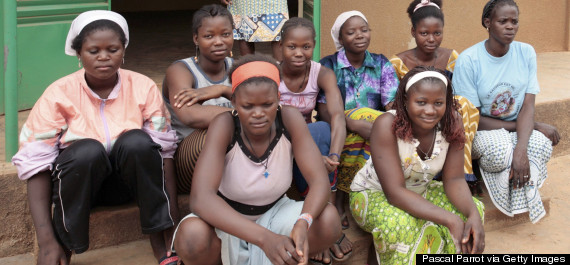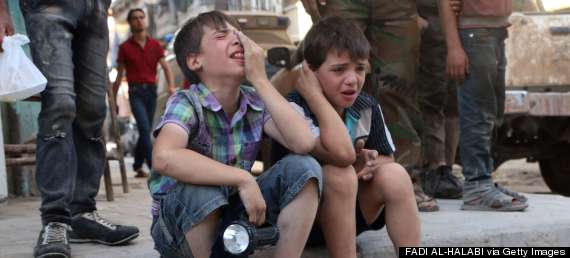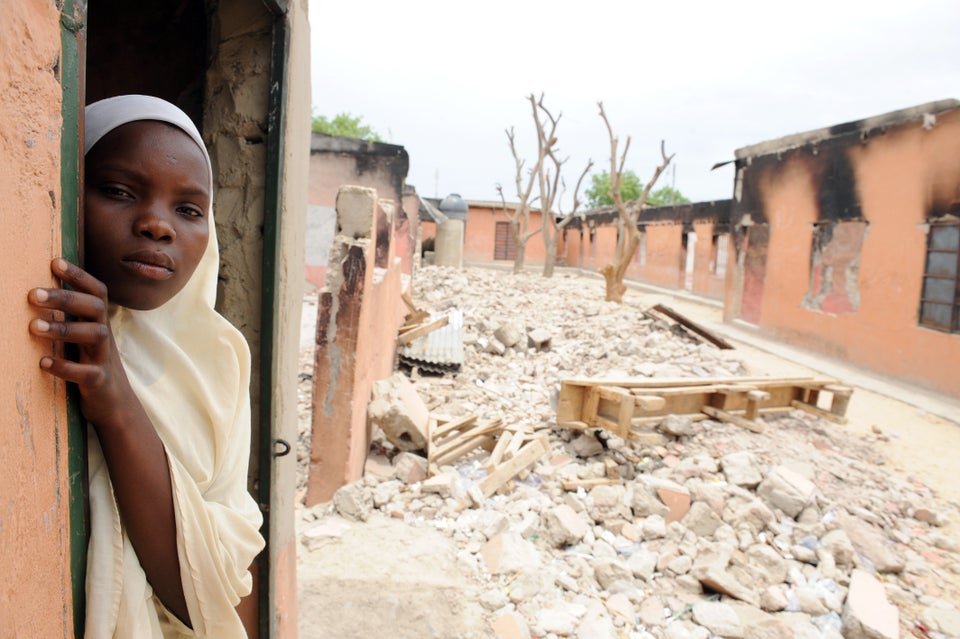
Across the globe, students stocked up on fresh supplies and caught up with old classmates last week. But for 31 million girls, there were no teachers to meet, no first-day jitters to quell and no new homework to get cracking on.
The issue of girls being deprived of an education is gaining traction on Monday’s International Literacy Day, a UNESCO event that aims to raise awareness for the basic learning rights millions of girls lack and the immeasurable long-term benefits education offers. This year’s focus is on developing opportunities for girls who are faring far worse than their male counterparts.
Of the 126 million young people who are illiterate across the globe, 61 percent are girls, according to UNESCO.
While giving every kid the chance to learn is one of the U.N.’s Millenium Development Goals (MDG), the world remains far from getting 58 million children in school by 2015, experts say.
The barriers are varied and complex.
Targeted violence against schoolgirls, cultural clashes, cost-prohibitive fees and families giving boys the opportunity when resources are strained are some of the main culprits that keep girls out of the classroom, according to UNICEF. Sometimes the issue is as minute as a girl not having access to sanitary pads. The risk of humiliation in the non-segregated bathrooms is enough to keep her at home.

March 6 2009, Kaya, Burkina Faso: Refuge welcomes 50 illiterate girls who were victims of forced marriage. They often spend several years there and learn reading and writing, cooking, gardening and sewing. (Photo by Pascal Parrot/Getty Images)
And it’s not just gaining knowledge that these young people are missing out on.
Advocates have long held that education is the No. 1 guarantor of income, wealth, status and security. But for girls, it also comes with the reduced risk of infant mortality, contracting HIV and being forced into child marriage.
But when the U.N. initially set its education goal in 2000, there was some definitive promise.
Within the first five years, enrollment in primary and lower-secondary schools increased by 1.5 percent annually. At that same rate, enrollment would have reached 97 percent worldwide by 2022, according to the U.N.
However after 2005, progress stalled.
To be sure, the figures are on the decline. The number of children who were out of school dropped to 57 million in 2011 from 60 million three years earlier, according to UNESCO.
But experts were expecting to see better numbers and recent conflicts have only compounded the situation.
Syria, for example, which was once the envy of the region for its literacy rates, has seen education enrollment precipitously plummet as the country enters its fourth year of civil war.

In March 2011, 97 percent of primary school-age children were enrolled in school and literacy rates surpassed the regional average, according to a recent UNICEF report. Two years later, just 30 percent of Syrian children had access to education.
"I used to have a dream, but it’s been blown away by the winds of this place," Heba, a 17-year-old living in the Za’atari refugee camp in Jordan, told UNICEF in December. "My dream was to go to university and study pharmacy. It was on my mind and in my heart, but it’s been reduced to ash."
The kidnapping of more than 200 Nigerian girls from a secondary school in April by terrorist group Boko Haram underscored the impossible dangers girls there face in trying to obtain basic human rights.

The group’s infamous leader Abubakar Shekau quickly took responsibility for the abduction and threatened to sell the girls off, CNN reported.
While the kidnapping set off a social media firestorm with the hashtag #BringBackOurGirls, some 219 girls still remain in captivity. Advocates say that the country’s failure to rescue the girls is a "massive embarrassment" to the government and the military.
But it also reinforces what education activists are going up against.
Northern Nigeria has some of the highest child marriage rates in the world where nearly half of the girls in the region are married by the age of 15, according to UNFPA. Only 4 percent of girls there complete secondary school.
While the situation is grim, the need for improved education access is having a moment in the spotlight.
Since Malala Yousafzai, 17, was nearly killed when she was shot in the head by the Taliban in 2012 while on her way home from school, the vehement activist has brought her education mission around the world.
Yousafzai pressed the U.N. on the inaugural "Malala Day" last year to take swifter action in bringing learning to children in need.
"The extremists were, and they are, afraid of books and pens," she said in her address. "The power of education frightens them. They are afraid of women. Let us pick up our books and pens. They are our most powerful weapons."

That same day, former U.K. Prime Minister Gordon Brown launched a worldwide petition demanding world leaders deliver on the 2015 MDG education goal, and U.N. Secretary-General Ban Ki-moon reiterated his commitment to the Global Education First Initiative’s three-pronged mission. It aims to put every child in school, improve the quality of learning and foster global citizenship.
"No child should have to die for going to school. Nowhere should teachers fear to teach or children fear to learn. Together, we can change the picture," Ban said in his 2013 U.N. address.
Yousafzai has continued her tireless advocacy work in the same results-driven vein.
In July, she urged Nigerian President Goodluck Jonathan to promise that he would find the missing girls and offer them scholarships upon their return. She’s also working on increasing educational opportunities for Syrian refugees by developing partnerships with grassroots organizations in Jordan.
It's such on-the-ground work combined with the initiatives of major organizations, like the U.N., that will succeed in changing the culture of education for girls.
In Mampong, Ghana, for example, schools struggle to keep girls enrolled because of the high teen pregnancy rate and that household duties are typically the child’s responsibility. Many girls there believe the misconception that if they don’t have a baby by the time they enter junior high school, their ability to do so will "expire," Agnes Nanor, CARE district coordinator of girls education, said in an interview in May.
But when CARE -- a nonprofit that serves the world’s poorest communities -- staged an "intervention" there, the group was able to dispel pregnancy myths and show girls and their families the value of learning.
Girls’ retention rates before CARE stepped in were 40 percent and now they’ve climbed to 65 percent in Mampong.
Their ambitions have also grown, too.
"My favorite subject is math," Jennifer, a young student in Mampong, told CARE. "When I grow up, I want to be a bank manager."



